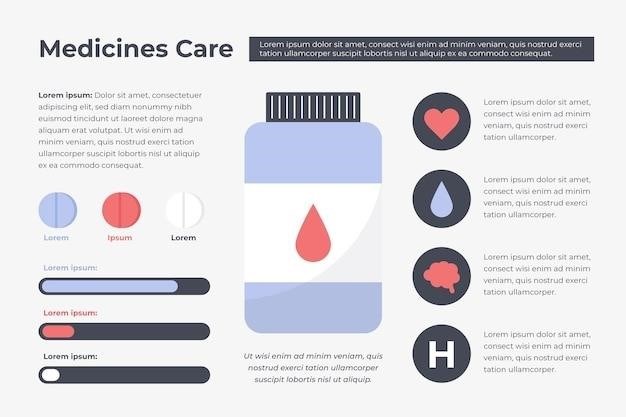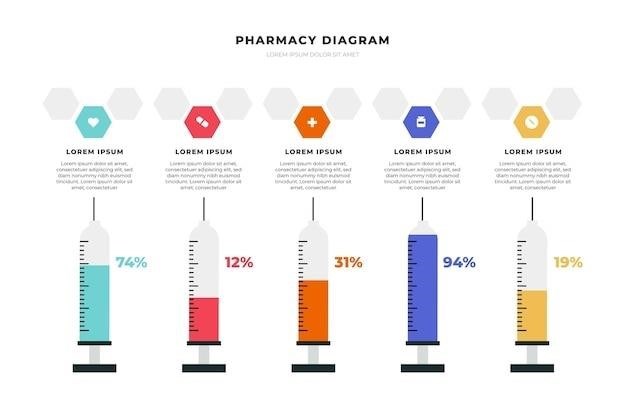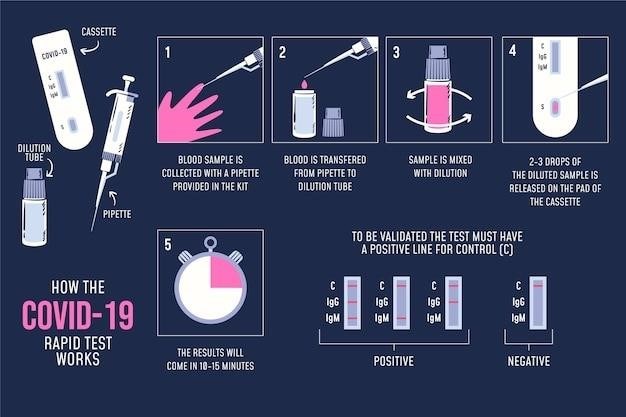
peptide dosing guide

Peptide Dosing Guide⁚ A Comprehensive Overview
This guide provides a thorough exploration of peptide dosing‚ encompassing various factors influencing dosage calculations‚ protocols for different peptides‚ safe practices‚ and monitoring strategies for optimal results. It offers a step-by-step approach to calculating dosages‚ and addresses common questions and concerns. Understanding peptide therapy requires careful consideration of these elements for successful treatment.

Introduction to Peptide Therapy
Peptide therapy‚ a burgeoning field in medicine‚ leverages short chains of amino acids (peptides) to modulate biological processes. Unlike larger proteins‚ peptides offer targeted actions‚ impacting specific cellular pathways. This precision minimizes off-target effects‚ enhancing therapeutic efficacy. The application of peptide therapy spans numerous areas‚ including wound healing‚ muscle growth stimulation‚ and anti-aging interventions. Peptide therapy is administered via various routes‚ including subcutaneous injections‚ intravenous infusions‚ and topical applications. Dosage regimens vary widely depending on the specific peptide‚ the targeted condition‚ and individual patient characteristics. The selection of a suitable peptide and the determination of its appropriate dose are critical for maximizing therapeutic benefits and minimizing adverse events. This requires careful consideration and professional guidance.
Understanding Peptide Dosage Forms
Peptides are available in diverse dosage forms‚ each impacting administration and bioavailability. Lyophilized powders‚ requiring reconstitution with bacteriostatic water or saline before injection‚ are common. Pre-mixed liquid solutions offer convenience‚ eliminating the reconstitution step‚ but may have a shorter shelf life. Oral peptides‚ while less common due to digestive enzyme degradation‚ are available in capsule or tablet form. Topical peptides are applied directly to the skin for localized effects. The choice of dosage form influences administration method—subcutaneous injection‚ intramuscular injection‚ intravenous infusion‚ or topical application. Careful consideration of the chosen form’s stability‚ ease of administration‚ and potential for degradation is crucial. The selected method must align with the peptide’s properties and the desired therapeutic outcome. Patient comfort and potential injection site reactions should also factor into the decision.
Factors Influencing Peptide Dosage
Several key factors significantly influence the appropriate peptide dosage. Individual patient characteristics‚ such as age‚ weight‚ and overall health‚ play a crucial role. The specific peptide being used is paramount‚ as each peptide possesses unique pharmacokinetic properties and efficacy profiles. The intended therapeutic goal also dictates dosage‚ with different objectives requiring varying concentrations and administration schedules. Pre-existing medical conditions and concurrent medications can interact with peptides‚ potentially necessitating dosage adjustments to minimize adverse effects. Furthermore‚ the route of administration (e.g.‚ subcutaneous injection‚ intravenous infusion) influences absorption and distribution‚ thereby affecting the necessary dosage. Finally‚ individual responses to therapy vary considerably; monitoring for efficacy and adverse events is essential for personalized dosage optimization. A collaborative approach involving healthcare professionals is key to establishing and managing safe and effective peptide regimens.
Calculating Peptide Dosage⁚ A Step-by-Step Guide
Precise peptide dosage calculation is crucial for effective and safe therapy. Begin by determining the desired dose‚ often expressed in micrograms (mcg) or milligrams (mg)‚ based on established protocols or physician recommendations. Next‚ ascertain the concentration of your peptide solution. This information is typically found on the product label‚ specifying the amount of peptide per milliliter (ml) or other volume unit. Then‚ use the formula⁚ Volume (ml) = Desired Dose (mcg or mg) / Concentration (mcg/ml or mg/ml). This calculation provides the volume of peptide solution needed for a single dose. Always double-check your calculations to prevent errors. Remember to use appropriate measurement tools (e.g.‚ calibrated syringes) for accurate administration. If using a peptide calculator‚ carefully input the relevant data to obtain the correct volume. Prior to administration‚ ensure the peptide is properly reconstituted according to manufacturer instructions. Document all calculations and administration details for accurate record-keeping.
Peptide Dosing Protocols⁚ Examples and Best Practices
Establishing effective peptide dosing protocols necessitates careful consideration of several key factors. First‚ the specific peptide being used plays a pivotal role; each peptide has unique properties and optimal dosage ranges. For instance‚ BPC-157 is often administered at 250-500 mcg per day‚ divided into two doses‚ while AOD 9604 might be used at 200-500 mcg once daily. Second‚ individual patient characteristics‚ such as age‚ weight‚ and overall health‚ influence dosage adjustments. Third‚ the intended therapeutic goal must be defined; different conditions may necessitate varied dosing strategies. Protocols may involve daily injections‚ multiple injections per day‚ or intermittent dosing cycles. Best practices emphasize starting with a conservative dose within the recommended range‚ closely monitoring for both efficacy and side effects‚ and gradually adjusting the dose as needed under professional guidance. Detailed records should be maintained to track treatment progress and responses. Remember that these are examples and individual protocols should be tailored by a healthcare professional.
Commonly Used Peptide Dosages
Dosage information for peptides varies greatly depending on the specific peptide‚ its intended use‚ and individual patient factors. It’s crucial to consult a healthcare professional for personalized guidance‚ as self-dosing can be risky. However‚ some commonly cited dosage examples include BPC-157‚ often administered at 250-500 mcg daily‚ divided into two doses; AOD 9604‚ with suggested daily dosages ranging from 200-500 mcg; and CJC-1295 with DAC‚ typically used at a dose of 1-3 mg every three days. These are merely examples; actual dosages can differ significantly. Dosage forms also vary‚ including injections (subcutaneous or intramuscular)‚ oral administration (though bioavailability may be lower)‚ and topical applications. Remember that the information presented here is for illustrative purposes only and should not be interpreted as medical advice. Always seek guidance from qualified healthcare professionals before initiating any peptide therapy regimen.
Advanced Peptide Dosing Strategies
Beyond basic dosing‚ advanced strategies optimize peptide therapy. Pulse dosing‚ involving intermittent high doses followed by periods without treatment‚ can enhance efficacy and minimize side effects. This approach is particularly relevant for peptides with short half-lives‚ allowing for targeted therapeutic effects while reducing potential long-term consequences. Another strategy is combination therapy‚ utilizing multiple peptides concurrently to achieve synergistic effects. Careful consideration of potential interactions and individual responses is crucial. Personalized dosing‚ guided by individual biomarkers and response monitoring‚ can further refine treatment. Pharmacokinetic and pharmacodynamic modeling can provide valuable insights into optimal dosing regimens. These advanced techniques‚ while promising‚ often require specialized expertise and careful monitoring to ensure safety and maximize therapeutic benefits. The use of peptide dosing calculators can also assist in determining appropriate dosages based on individual factors.
Using a Peptide Dosing Calculator
Peptide dosing calculators streamline the process of determining accurate dosages‚ minimizing errors and enhancing safety. These tools typically require inputting relevant parameters such as peptide type‚ desired dose‚ concentration‚ and body weight. The calculator then performs the necessary calculations to determine the appropriate volume of reconstituted peptide solution for injection. Several online and software-based calculators are available‚ offering varying levels of complexity and features. While these calculators can be extremely helpful‚ it’s crucial to understand their limitations. They should be used as aids‚ not replacements‚ for professional medical advice; Always consult with a healthcare professional or a knowledgeable expert before initiating any peptide therapy. Remember‚ individual responses vary‚ and adjustments may be necessary based on observed effects. Accuracy in inputting data is paramount to ensure the calculator provides reliable results. Use of a calculator should be coupled with a thorough understanding of peptide administration techniques.
Safety Precautions and Side Effects
Peptide therapy‚ while potentially beneficial‚ carries inherent risks. Adhering to strict safety protocols is paramount. Always source peptides from reputable suppliers to ensure purity and quality. Proper aseptic techniques are crucial during reconstitution and injection to prevent infection. Start with the lowest effective dose and gradually increase it only under medical supervision‚ carefully monitoring for any adverse reactions. Common side effects can include injection site reactions (pain‚ redness‚ swelling)‚ nausea‚ headache‚ and fatigue. More serious‚ albeit rare‚ side effects may occur‚ necessitating immediate medical attention. Individuals with pre-existing medical conditions should exercise caution and consult their physician before starting peptide therapy. Regular monitoring of vital signs and blood work can help identify potential issues early on. Open communication with your healthcare provider is vital to address any concerns or side effects promptly. Discontinuing use and seeking medical advice is crucial if you experience any severe or unexpected reactions. Always follow your healthcare provider’s guidance regarding dosage‚ administration‚ and monitoring.
Monitoring and Adjusting Peptide Dosage
Consistent monitoring is crucial for optimizing peptide therapy. Regularly track your progress‚ noting any physical changes‚ improvements‚ or side effects. Keep a detailed log documenting the dosage‚ administration time‚ and any observed responses. This meticulous record-keeping aids in identifying effective dosages and allows for prompt adjustments if necessary. Blood tests and other diagnostic tools may be employed to assess the effectiveness and safety of the treatment. Your healthcare provider may recommend periodic check-ups to monitor your overall health and evaluate the peptide’s impact. Dosage adjustments should always be made in consultation with your physician. Never alter your dosage independently without professional guidance. Based on your progress and any adverse effects‚ your doctor might recommend increasing‚ decreasing‚ or maintaining the current dosage. Individual responses to peptide therapy vary; therefore‚ a personalized approach to monitoring and adjustment is essential. This collaborative approach ensures the treatment remains safe and effective‚ maximizing benefits while mitigating potential risks. Remember‚ consistent communication with your healthcare provider is crucial throughout the entire process.
Conclusion⁚ Optimizing Your Peptide Regimen
Successfully navigating peptide therapy hinges on a personalized approach to dosing. This involves careful consideration of individual factors‚ precise calculation methods‚ and consistent monitoring. Remember‚ the information provided here serves as a guide‚ not a substitute for professional medical advice. Always consult with a healthcare provider before starting any peptide regimen. They can assess your specific needs‚ recommend appropriate dosages‚ and monitor your progress. Open communication with your doctor is key to optimizing your treatment plan. By working collaboratively‚ you can tailor your peptide therapy to achieve the desired outcomes while minimizing potential risks. Regular check-ups and careful attention to any side effects ensure the safety and efficacy of your treatment. Remember‚ the goal is to achieve therapeutic benefits while maintaining a safe and effective dosage. Through careful planning‚ precise administration‚ and consistent monitoring‚ you can optimize your peptide regimen for improved health and well-being. Individual results may vary.